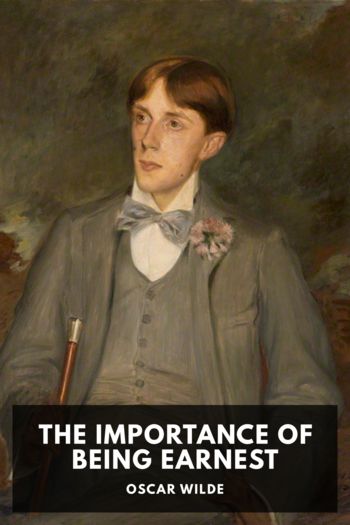Living History, Unknown [books to read in your 20s female TXT] 📗

- Author: Unknown
Book online «Living History, Unknown [books to read in your 20s female TXT] 📗». Author Unknown
The cooperatives were groups of individuals and businesses forged for the purpose of purchasing insurance. Together, they could bargain with insurance companies for better benefits and prices and use their leverage to assure high-quality care. The best model was the Federal Employees Health Benefit Plan, which covered nine million federal employees and offered an array of insurance options to its members. Prices and quality were monitored by the plan’s administrators.
Under managed competition, hospitals and doctors would no longer bear the expense of treating patients who weren’t covered because everyone would be insured through Medicare, Medicaid, the veterans and military health care plans or one of the purchasing groups.
Perhaps most important, the system would allow patients to choose their own doctors, a non-negotiable item in Bill’s view.
Given the multitude of approaches to health care reform, feelings in Congress ran deep, Gephardt told us. Just a week earlier, he had held a health care meeting in his House office in which two members of Congress disagreed so violently that they nearly came to blows. Gephardt was emphatic that our best hope for passage was to attach health care reform to a budget bill known as the Budget Reconciliation Act, which Congress usually voted on in late spring. “Reconciliation” combines a variety of congressional budget and tax decisions into one bill that can be approved or disapproved by a simple majority vote in the Senate without the threat of a filibuster, a delaying tactic often used to kill controversial legislation, which requires sixty votes to break. Many budget items, particularly those relating to tax policy, are so complicated that debate can endlessly tie up proceedings in the full House and Senate. Reconciliation is a procedural tool designed to move controversial tax and spending bills through Congress. Gephardt was suggesting that it be used in an unprecedented way: to legislate a major transformation in American social policy.
Gephardt was sure that Republicans in the Senate would filibuster any health care package we put forward. He also knew that the Senate Democrats would have trouble mustering sixty votes to stop it, given that Democrats held only a fifty-six to forty-four advantage.
Gephardt’s strategy, therefore, was to circumvent a filibuster by putting health care reform into the budget reconciliation package. A simple majority would be required to pass the bill, and Vice President Gore could cast the tiebreaking fifty-first vote, if needed.
Ira and I knew that Bill’s economic team inside the White House would likely reject a budget reconciliation strategy that included health care because it could complicate the administration’s efforts on the deficit reduction and economic plan. We broke up our meeting, and I took Gephardt straight to the Oval Office to make his case directly to Bill.
Bill was convinced by Gephardt’s argument and asked Ira and me to explore the idea with the Senate leadership.
Armed with Gephardt’s suggestions and Bill’s encouragement, Ira and I trooped up to Capitol Hill the following day to meet with Majority Leader George Mitchell in his office in the Capitol. This was the first of hundreds of visits I made to members of Congress over the course of health care reform. Mitchell’s soft-spoken demeanor belied his toughminded leadership of the Senate Democrats. I respected his opinion, and he agreed with Gephardt. Health care would be impossible to pass unless it was part of reconciliation.
Mitchell was also nervous about the Senate Finance Committee, which would otherwise have jurisdiction over many aspects of health care legislation. He was particularly worried that committee Chairman Daniel Patrick Moynihan of New York, a veteran Democrat and a skeptic about health care reform, would react badly to the plan. Moynihan was an intellectual giant and an academic by training―he had taught sociology at Harvard before running for the Senate―as well as an expert on poverty and family issues. He had wanted the President and Congress to take up welfare reform first. He wasn’t happy when Bill announced his one-hundred-day target for health care legislation―and he let everyone know it.
At first I found his position frustrating, but I began to understand. Bill and I shared Senator Moynihan’s commitment to welfare reform, but Bill and his economic team believed that the government would never get control of the federal budget deficit unless health care costs went down. They had concluded that health care reform was essential to his economic policy and that welfare could wait. Senator Moynihan anticipated how hard it would be to get health care through his committee. He knew he was going to be responsible for shepherding Bill’s economic stimulus package through the Finance Committee and onto the Senate floor. That in itself would require extraordinary political skill and leverage. Some Republicans were already publicizing plans to vote against it, no matter what it contained. And some Democrats might need convincing, particularly if the package involved a tax increase.
We left Mitchell’s office with a clearer sense of what needed to be done, particularly on reconciliation. Now we had to convince the economic team―notably Leon Panetta, Director of the Office of Management and Budget―that including health care reform in reconciliation would serve the overall economic strategy the President was pursuing, not divert attention from the deficit reduction plan. Bill only had so much political capital to work with, and he had to use it to get the deficit down, one of his central campaign promises.
The thinking in some quarters of the West Wing was that Bill’s focus on health care would divert Americans from his economic message and muddy the political waters.
We also had to convince Senator Robert C. Byrd of West Virginia that health care reform belonged in reconciliation. The Democratic Chairman of the Senate Appropriations Committee, Byrd had served in the Senate by then for thirty-four years. Stately and silver-haired, he was the unofficial historian of the Senate and a parliamentary genius, famous for standing in the well





Comments (0)